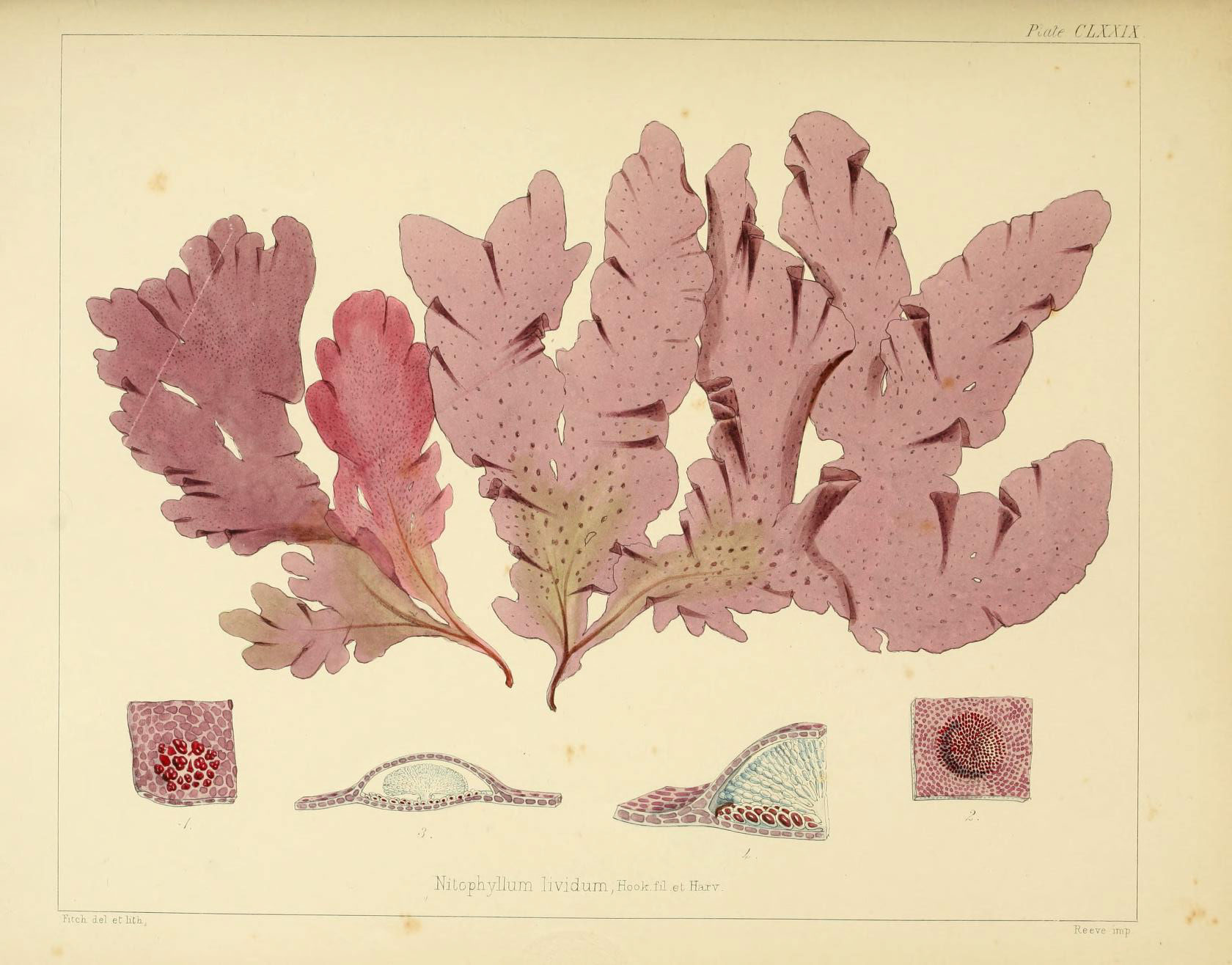 Evolution & Behaviour
Evolution & Behaviour
Plants have deep roots in time
The evolutions of modern plants set its beginning earlier than we thought. Where it all began? How photosynthesis became a plants' feature? Old fossils hold the answer.

Plants capture sunlight to turn water and carbon dioxide into food and oxygen. This seemingly simple process is called photosynthesis. Without it we wouldn't be able to eat and breathe. What framed the benignant greenery, how did plants come to paint the Earth emerald and boost the biosphere?
Most people, also biologists, equate plants with "green plants", the flora of the land and shallow waters. What makes them green is the chlorophyll, a sunlight-harvesting pigment that is at the heart of the life-giving photosynthesis. But the most primitive plants are red rather than green. More precisely, they are algae, red algae. They still have chlorophyll, but they tend to hide it beneath other pigments. Their "redness" allows them to perform photosynthesis even in deeper waters, more efficiently than what green algae would do.
Back in time, photosynthesys was "invented" by photosynthetic bacteria called cyanobacteria. At some stage in evolution, the ancestral plant engulfed cyanobacteria that continued to live within the host, establishing a profitable give-and-take symbiosis. These tamed cyanobacteria would have then evolved to become the photosynthesis devices of modern plants, the chloroplasts. Before this major event of evolution, all of the oxygen produced within the biosphere was released by cyanobacteria.
Photosynthesys is today mainly carried out by plants rather than bacteria, so when did the plants take over the role of oxygen producers? Our evidence from 1.6 billion-year-old rocks in central India suggests that plants emerged more than a billion years before the major evolutive event called the "Cambrian Explosion", at which the three main branches of multicellular organisms - plants, fungi and animals - diversified and blossomed to put their distinctive signature on an otherwise mostly microbial world.
The discovery came when our research team investigated fossil cyanobacterial communities from an ancient sea floor at Chitrakoot in Madhya Pradesh, India. The cyanobacteria lived in mats that formed pillow-like structures on the sea floor called stromatolites. Their fossilization preserves exquisite details of cells and their interiors. Thanks to X-ray microtomography (similar to medical CAT scans, but with much finer resolution), we found embedded with the bacterial mats two kinds of fossils that were clearly not bacteria: threads and bulbs. When we investigated these fossils in detail, we saw features suggesting that both these fossil forms belonged to red algae.
The threads are about the width of a human hair and consist of chains of cells with an internal rhomboidal body suspended in the middle of each cell. The walls between the cells initially have a central pore, whereas mature walls are complete but commonly show a granular object in the middle. We interpreted the rhomboidal body as a subunit of the modern chloroplasts and the central wall structures as features that characterize many modern red algae.
The centimeter-sized bulbs form fingerlike projections with cell rows resembling fountains. These structures are very similar to what is seen in modern lobate red algae.
Fossils can never give the same quality of morphological and chemical detail as living organisms, and the fossilization process always introduces artefacts that are essential to recognize and understand. DNA analysis allows the definition of precise evolutionary relationships of living beings but cannot be used on fossils older than a few tens of thousands of years. Yet with enough morphological and structural details preserved, we may interpret ancient fossils within the particular framework that living organisms cannot provide: deep time. What these Indian fossils tell us is that a billion years before animals appeared and started to diversify, plants were already present in the seas.
Animals need plants to breathe and eat, and wherever animals could go, plants must have gone there first to pave the way. The fossil record from those billion years between the first plants and the first animals tells us of a slow increase of algal fossils, before the "Cambrian Explosion", when animals suddenly flooded the seas. Plants, fungi and animals then went on to conquer the land surfaces, and the rest is evolutionary history.
Original Article:
Bengtson S, Sallstedt T, Belivanova V, Whitehouse M. Three-dimensional preservation of cellular and subcellular structures suggests 1.6 billion-year-old crown-group red algae. PLOS Biology. 2017;15(3):e2000735. doi:10.1371/journal.pbio.2000735.Next read: The ancient origin of some modern Asian populations revealed by ancient DNA by Veronika Siska , Andrea Manica
Edited by:
Massimo Caine , Founder and Director
We thought you might like
Probing the evolution of photosynthetic life on the early Earth
Jun 19, 2018 in Plant Biology | 3 min read by Andrew H. KnollA newly discovered (microscopic) global source of methane
Oct 30, 2020 in Microbiology | 3.5 min read by Mina Bizic , Thomas Klintzsch , Danny IonescuDid Homo naledi meet Homo sapiens in South Africa?
Feb 8, 2018 in Evolution & Behaviour | 4 min read by Hannah Hilbert-Wolf , Paul Dirks , Eric RobertsMore from Evolution & Behaviour
Cicada emergence alters forest food webs
Jan 31, 2025 in Evolution & Behaviour | 3.5 min read by Martha Weiss , John LillSize does not matter: direct estimations of mutation rates in baleen whales
Jan 29, 2025 in Evolution & Behaviour | 4 min read by Marcos Suárez-MenéndezThe Claws and the Spear: New Evidence of Neanderthal-Cave Lion Interactions
Jan 22, 2025 in Evolution & Behaviour | 3.5 min read by Gabriele RussoA deep-sea spa: the key to the pearl octopus’ success
Jan 20, 2025 in Evolution & Behaviour | 3.5 min read by Jim BarryFeisty fish and birds with attitude: Why does evolution not lead to identical individuals?
Aug 31, 2024 in Evolution & Behaviour | 3 min read by Lukas Eigentler , Klaus Reinhold , David KikuchiEditor's picks
Trending now
Popular topics


